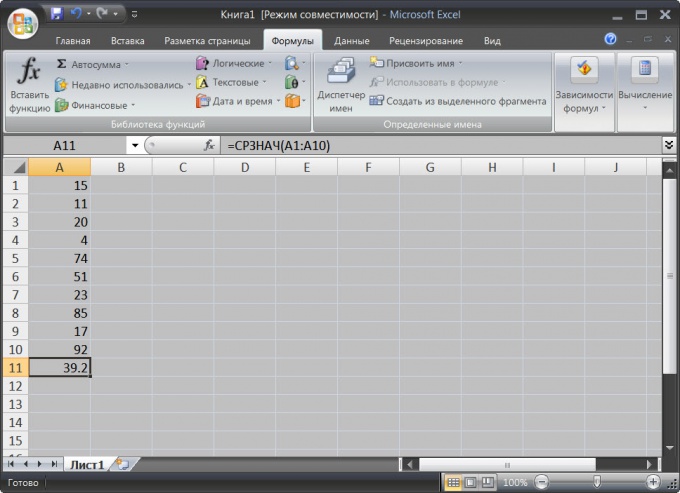You will need
- The table editor Microsoft Office Excel
Instruction
1
Begin typing the formula in the cell table editor with pressing the equal sign. This sign at the beginning of the line Excel determines that the contents of the cell it needs to be interpreted as a formula, not a table data.
2
Use the " / " character (slash) to denote division operation, the sign "*" (asterisk) for multiplication, the ^ (circumflex) for exponentiation. For example, to multiply 2 by 3 and the result raised to the cube, click the empty table cell and type the following sequence of characters:=(2*3)^3PO the end of the input press Enter, Excel will calculate and show you the result.The operations of addition, subtraction and comparison when input formulas are denoted by their usual symbols.
3
Insert formulas in cell references, if the table data should be involved in the calculations. For this set of formulas is enough to click the desired cell in the table. For example, if cell A3 should show the result of multiplying the value in cell A1 by the value in cell A2, then click in cell A3, enter an equals sign, click cell A1, type the multiplication sign, click cell A2 and press Enter.
4
Use in formulas preset in editor functions for more complex calculations. You can enter the names of the functions themselves, but at first it is more convenient to use the dialogue of "the master of functions". For example, if necessary, in cell A11 put the average value of the range of cells A1 through A10, click cell A10, press the equal sign, and then click the "Insert function" at the beginning of the formula bar above the table.
5
Open the drop-down Category list in the dialog window and select "Statistical". In the function list, click average - to mix will be difficult, because the description of the selected function appears below the list.
6
Click "OK" to proceed to the next step of the wizard functions. In the second step you need to specify the function parameters - each of them has its own set of parameters. To determine the average values of range of cells is sufficient to set a reference to its first and last cell in the field "Number1". The wizard will put the most likely range, and if necessary, you can change it.
7
Click "OK" to complete the wizard function. This is the basic way of working with formulas and functions, and as you development you will discover a huge variety of options for their use.

